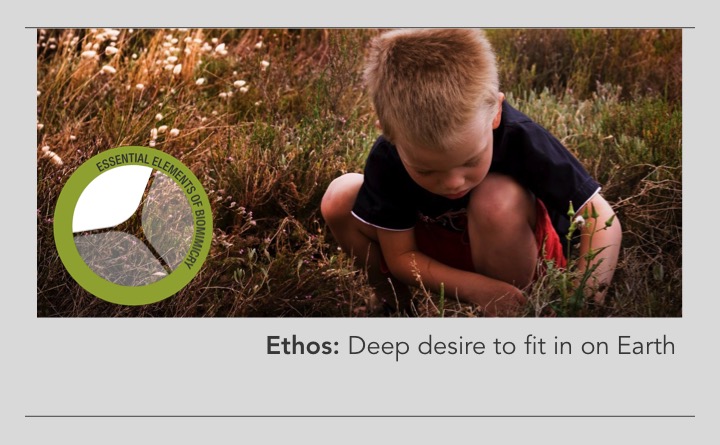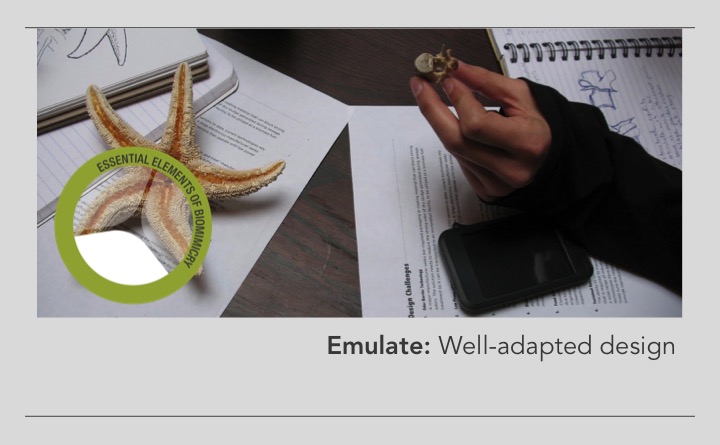What are the essential elements of biomimicry?
The practice of biomimicry embodies three interconnected, but unique core values that represent the foundation of what biomimicry is all about. By combining the essential elements together, bio-inspired design becomes biomimicry.
Ethos
The ethos element forms the essence of our ethics, our intentions, and our underlying philosophy for why we practice biomimicry. Ethos represents our respect for, responsibility to, and gratitude for our fellow species and our home.
The ethos element of biomimicry comes from the emulation of nature in creating conditions conducive to life. This is the point of intersection of biomimicry and sustainable design.
(Re)Connect
We as humans are a part of nature. The (re)connect element reinforces the understanding that, while seemingly “separate,” people and nature are actually deeply intertwined. For some this is a reconnection to something they intuitively felt at some point (often times as children) and so it is a reconnection, while for others biomimicry offers a way of connecting with nature for the first time.
(Re)connecting is a practice and a mindset that explores and deepens this relationship between humans and the rest of nature. This essential element is where biomimicry and biophilia strongly connect.
Emulate
The emulate element is often most heavily emphasized in articles about biomimicry and is the innovation and design aspect of biomimicry. It is the element that brings the principles, patterns, strategies, and functions found in nature forward to inform design. Emulation is about being proactive in achieving the vision of humans fitting in sustainably on earth.
Discover More Biomimicry
Get the Essential Elements infographic and more, including Life's Principles and Biomimicry Thinking in the Biomimicry DesignLens package.
Get the Biomimicry Textbook
The Biomimicry Resource Handbook: A Seed Bank of Best Practices is the definitive textbook to the practice and philosophy of biomimicry developed by Biomimicry 3.8 written by co-founder Dr. Dayna Baumeister.
Share Biomimicry With Your World
If you like what you see here, share it with your network and spread the ideas!





